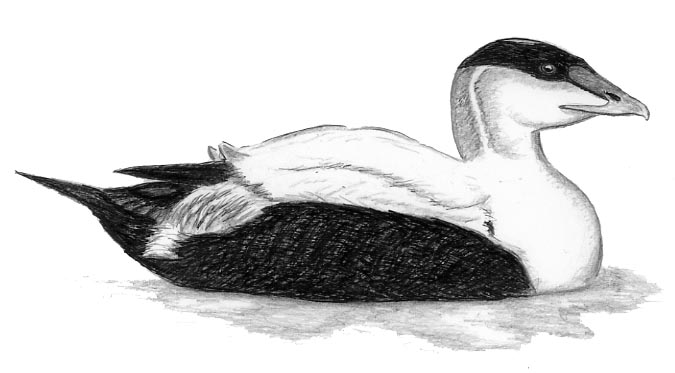
Dear Bird Folks,
While strolling on Great Island in Wellfleet [MA] last week, we came upon several of these ducks (see attached photo) that were lying on the beach. I don’t know if you can tell from the photo, but they were fairly large ducks with greenish bills. We are wondering if you can tell us what kind of ducks they are and if this is unusual?
– Vince, Troy, NY
Yes, Vince,
I can tell you what kind of ducks those are. After carefully studying your photo, I’m pretty sure those are dead ducks. The tip-off was seeing their feet sticking up in the air. That is never a good sign for any bird. Sorry, I shouldn’t be making light of the loss of so many ducks, but over the last few months I have seen dozens of pictures of those same dead birds. I’ve probably seen fewer pictures of Britney than I’ve seen of those poor ducks. If this keeps up they are going to need an agent. Hopefully, they’ll choose an agent that will do a better job for them than Britney’s has done for her.
The birds in your picture are Common Eiders. I wasn’t kidding about seeing lots of pictures of them. Apparently that Great Island walk is extremely popular because just about every person I’ve talked to lately has asked me about those ducks. The impressive thing to me is that so many people are taking that walk. I took that Great Island walk once and it nearly killed me. It seems to go on and on and on. Perhaps those eiders thought they too could hike Great Island and ended up dying of exhaustion. I’ll bet that’s what happened. Somebody needs to warn birds about that trail.
You were correct, Vince, when you said that the ducks you saw were “fairly large.” Common Eiders are the largest duck in the Northern Hemisphere. (That’s a good trivia question. Remember that the next time you are on Jeopardy.) These birds are large, strong, hardy, and love the ocean. It is extremely rare to find an eider away from the coast. The only records of inland sightings were older birds that most likely wandered away from a fall foliage bus tour.
Finding a dead eider washed up on a Cape Cod beach isn’t that unusual. Each year hundreds of thousands of these jumbo sea ducks spend their winter in the Cape’s waters. With such a massive population there is bound to be some mortality. But the dead birds that have washed up on the beaches of Wellfleet (and also at other Cape locations) are far more than would be expected. The immediate reaction is that the birds could be victims of West Nile, or worse, the avian flu, or worser still, a bad clam roll. To find out just what is going on, some of the birds were shipped off to Tufts University’s Dead Duck Lab. With a sigh of relief the lab reported that the birds weren’t victims of West Nile, avian flu, or a bad clam roll. It turned out to be a bad batch of coleslaw that did the birds in. Figures.
Okay, here is what is really killing the eiders, but first I must warn you, it’s kind of creepy. If you are easily grossed out you may want to stop reading this now and go talk to the dog or something. All right, you’ve been warned. Tests showed that the dead eiders were infested with a parasite, which goes by the lovely name of “thorny-headed-worm.” I’m not really sure what a thorny-headed-worm is, but anytime the words “parasite,” “infested,” and “thorny-headed” are strung together, it’s not something I want. And here is why I don’t want it. The spines of this freaky creature attach themselves to the digestive system of the eiders and…I don’t think we really need to get into what happens next.
The Common Eider’s food of choice is the blue mussel. The birds feed on them by diving down, plucking them from the bottom and swallowing them whole. As long as they are able to stay with their mussel-only diet things are fine, but if the mussel supply runs low the birds are forced to start eating other things. A few of those other things, including mole crabs and periwinkles, are carriers of the parasite. Once consumed, they pass those thorny things on to the eiders. That’s when the trouble begins.
As sad as it is to find dead eiders on the beach, Vince, losing a few hundred each year to the whims of nature is not a real cause for concern, yet. Their overall population is still fairly stable, even after tens of thousands of them are shot by hunters. The real concern is their food supply and keeping the muscle beds healthy. The eiders would be in trouble – big trouble – without mussels. And just so you know, the parasite that kills the eiders is somewhat species specific. You don’t need to be afraid of walking the beach. Those thorny-heads rarely bother humans. Still, I wouldn’t go biting into any decaying eiders, but that’s up to you. _